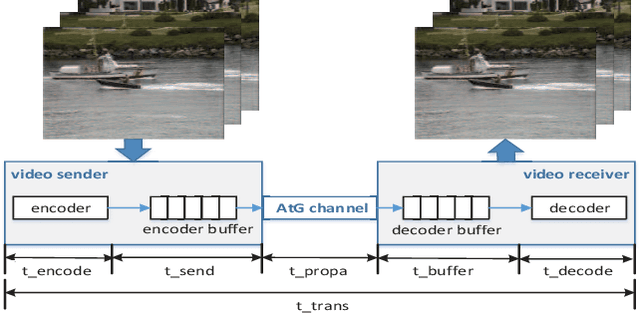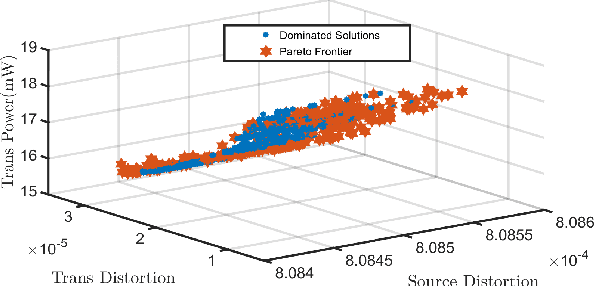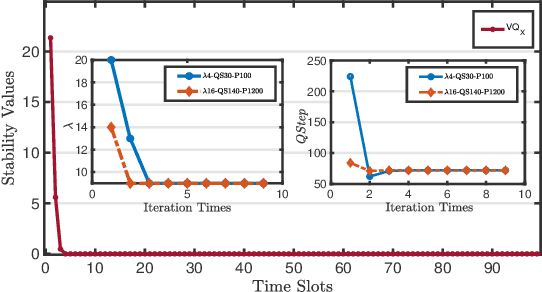Peng Yang
Sherman
MouseGPT: A Large-scale Vision-Language Model for Mouse Behavior Analysis
Mar 13, 2025Abstract:Analyzing animal behavior is crucial in advancing neuroscience, yet quantifying and deciphering its intricate dynamics remains a significant challenge. Traditional machine vision approaches, despite their ability to detect spontaneous behaviors, fall short due to limited interpretability and reliance on manual labeling, which restricts the exploration of the full behavioral spectrum. Here, we introduce MouseGPT, a Vision-Language Model (VLM) that integrates visual cues with natural language to revolutionize mouse behavior analysis. Built upon our first-of-its-kind dataset - incorporating pose dynamics and open-vocabulary behavioral annotations across over 42 million frames of diverse psychiatric conditions - MouseGPT provides a novel, context-rich method for comprehensive behavior interpretation. Our holistic analysis framework enables detailed behavior profiling, clustering, and novel behavior discovery, offering deep insights without the need for labor - intensive manual annotation. Evaluations reveal that MouseGPT surpasses existing models in precision, adaptability, and descriptive richness, positioning it as a transformative tool for ethology and for unraveling complex behavioral dynamics in animal models.
Adaptive Subarray Segmentation: A New Paradigm of Spatial Non-Stationary Near-Field Channel Estimation for XL-MIMO Systems
Mar 06, 2025Abstract:To tackle the complexities of spatial non-stationary (SnS) effects and spherical wave propagation in near-field channel estimation (CE) for extremely large-scale multiple-input multiple-output (XL-MIMO) systems, this paper introduces an innovative SnS near-field CE framework grounded in adaptive subarray partitioning. Conventional methods relying on equal subarray partitioning often lead to suboptimal divisions, undermining CE precision. To overcome this, we propose an adaptive subarray segmentation approach. First, we develop a spherical-wave channel model customized for line-of-sight (LoS) XL-MIMO systems to capture SnS traits. Next, we define and evaluate the adverse effects of over-segmentation and under-segmentation on CE efficacy. To counter these issues, we introduce a novel dynamic hybrid beamforming-assisted power-based subarray segmentation paradigm (DHBF-PSSP), which merges cost-effective power measurements with a DHBF structure, enabling joint subarray partitioning and decoupling. A robust partitioning algorithm, termed power-adaptive subarray segmentation (PASS), exploits statistical features of power profiles, while the DHBF utilizes subarray segmentation-based group time block code (SS-GTBC) to enable efficient subarray decoupling with limited radio frequency (RF) chain resources. Additionally, by utilizing angular-domain block sparsity and inter-subcarrier structured sparsity, we propose a subarray segmentation-based assorted block sparse Bayesian learning algorithm under the multiple measurement vectors framework (SS-ABSBL-MMV), employing discrete Fourier transform (DFT) codebooks to lower complexity. Extensive simulation results validate the exceptional performance of the proposed framework over its counterparts.
Brain-Inspired Decentralized Satellite Learning in Space Computing Power Networks
Jan 27, 2025Abstract:Satellite networks are able to collect massive space information with advanced remote sensing technologies, which is essential for real-time applications such as natural disaster monitoring. However, traditional centralized processing by the ground server incurs a severe timeliness issue caused by the transmission bottleneck of raw data. To this end, Space Computing Power Networks (Space-CPN) emerges as a promising architecture to coordinate the computing capability of satellites and enable on board data processing. Nevertheless, due to the natural limitations of solar panels, satellite power system is difficult to meet the energy requirements for ever-increasing intelligent computation tasks of artificial neural networks. To tackle this issue, we propose to employ spiking neural networks (SNNs), which is supported by the neuromorphic computing architecture, for on-board data processing. The extreme sparsity in its computation enables a high energy efficiency. Furthermore, to achieve effective training of these on-board models, we put forward a decentralized neuromorphic learning framework, where a communication-efficient inter-plane model aggregation method is developed with the inspiration from RelaySum. We provide a theoretical analysis to characterize the convergence behavior of the proposed algorithm, which reveals a network diameter related convergence speed. We then formulate a minimum diameter spanning tree problem on the inter-plane connectivity topology and solve it to further improve the learning performance. Extensive experiments are conducted to evaluate the superiority of the proposed method over benchmarks.
Hardware-Aware DNN Compression for Homogeneous Edge Devices
Jan 25, 2025



Abstract:Deploying deep neural networks (DNNs) across homogeneous edge devices (the devices with the same SKU labeled by the manufacturer) often assumes identical performance among them. However, once a device model is widely deployed, the performance of each device becomes different after a period of running. This is caused by the differences in user configurations, environmental conditions, manufacturing variances, battery degradation, etc. Existing DNN compression methods have not taken this scenario into consideration and can not guarantee good compression results in all homogeneous edge devices. To address this, we propose Homogeneous-Device Aware Pruning (HDAP), a hardware-aware DNN compression framework explicitly designed for homogeneous edge devices, aiming to achieve optimal average performance of the compressed model across all devices. To deal with the difficulty of time-consuming hardware-aware evaluations for thousands or millions of homogeneous edge devices, HDAP partitions all the devices into several device clusters, which can dramatically reduce the number of devices to evaluate and use the surrogate-based evaluation instead of hardware evaluation in real-time. Experiments on ResNet50 and MobileNetV1 with the ImageNet dataset show that HDAP consistently achieves lower average inference latency compared with state-of-the-art methods, with substantial speedup gains (e.g., 2.86 $\times$ speedup at 1.0G FLOPs for ResNet50) on the homogeneous device clusters. HDAP offers an effective solution for scalable, high-performance DNN deployment methods for homogeneous edge devices.
Domain-Agnostic Co-Evolution of Generalizable Parallel Algorithm Portfolios
Jan 08, 2025Abstract:Generalization is the core objective when training optimizers from data. However, limited training instances often constrain the generalization capability of the trained optimizers. Co-evolutionary approaches address this challenge by simultaneously evolving a parallel algorithm portfolio (PAP) and an instance population to eventually obtain PAPs with good generalization. Yet, when applied to a specific problem class, these approaches have a major limitation. They require practitioners to provide instance generators specially tailored to the problem class, which is often non-trivial to design. This work proposes a general-purpose, off-the-shelf PAP construction approach, named domain-agnostic co-evolution of parameterized search (DACE), for binary optimization problems where decision variables take values of 0 or 1. The key innovation of DACE lies in its neural network-based domain-agnostic instance representation and generation mechanism that delimitates the need for domain-specific instance generators. The strong generality of DACE is validated across three real-world binary optimization problems: the complementary influence maximization problem (CIMP), the compiler arguments optimization problem (CAOP), and the contamination control problem (CCP). Given only a small set of training instances from these classes, DACE, without requiring any domain knowledge, constructs PAPs with better generalization performance than existing approaches on all three classes, despite their use of domain-specific instance generators.
Multi-Agents Based on Large Language Models for Knowledge-based Visual Question Answering
Dec 24, 2024Abstract:Large Language Models (LLMs) have achieved impressive results in knowledge-based Visual Question Answering (VQA). However existing methods still have challenges: the inability to use external tools autonomously, and the inability to work in teams. Humans tend to know whether they need to use external tools when they encounter a new question, e.g., they tend to be able to give a direct answer to a familiar question, whereas they tend to use tools such as search engines when they encounter an unfamiliar question. In addition, humans also tend to collaborate and discuss with others to get better answers. Inspired by this, we propose the multi-agent voting framework. We design three LLM-based agents that simulate different levels of staff in a team, and assign the available tools according to the levels. Each agent provides the corresponding answer, and finally all the answers provided by the agents are voted to get the final answer. Experiments on OK-VQA and A-OKVQA show that our approach outperforms other baselines by 2.2 and 1.0, respectively.
A Survey on Point-of-Interest Recommendation: Models, Architectures, and Security
Oct 03, 2024



Abstract:The widespread adoption of smartphones and Location-Based Social Networks has led to a massive influx of spatio-temporal data, creating unparalleled opportunities for enhancing Point-of-Interest (POI) recommendation systems. These advanced POI systems are crucial for enriching user experiences, enabling personalized interactions, and optimizing decision-making processes in the digital landscape. However, existing surveys tend to focus on traditional approaches and few of them delve into cutting-edge developments, emerging architectures, as well as security considerations in POI recommendations. To address this gap, our survey stands out by offering a comprehensive, up-to-date review of POI recommendation systems, covering advancements in models, architectures, and security aspects. We systematically examine the transition from traditional models to advanced techniques such as large language models. Additionally, we explore the architectural evolution from centralized to decentralized and federated learning systems, highlighting the improvements in scalability and privacy. Furthermore, we address the increasing importance of security, examining potential vulnerabilities and privacy-preserving approaches. Our taxonomy provides a structured overview of the current state of POI recommendation, while we also identify promising directions for future research in this rapidly advancing field.
Resource-Efficient Generative AI Model Deployment in Mobile Edge Networks
Sep 09, 2024Abstract:The surging development of Artificial Intelligence-Generated Content (AIGC) marks a transformative era of the content creation and production. Edge servers promise attractive benefits, e.g., reduced service delay and backhaul traffic load, for hosting AIGC services compared to cloud-based solutions. However, the scarcity of available resources on the edge pose significant challenges in deploying generative AI models. In this paper, by characterizing the resource and delay demands of typical generative AI models, we find that the consumption of storage and GPU memory, as well as the model switching delay represented by I/O delay during the preloading phase, are significant and vary across models. These multidimensional coupling factors render it difficult to make efficient edge model deployment decisions. Hence, we present a collaborative edge-cloud framework aiming to properly manage generative AI model deployment on the edge. Specifically, we formulate edge model deployment problem considering heterogeneous features of models as an optimization problem, and propose a model-level decision selection algorithm to solve it. It enables pooled resource sharing and optimizes the trade-off between resource consumption and delay in edge generative AI model deployment. Simulation results validate the efficacy of the proposed algorithm compared with baselines, demonstrating its potential to reduce overall costs by providing feature-aware model deployment decisions.
QuantFactor REINFORCE: Mining Steady Formulaic Alpha Factors with Variance-bounded REINFORCE
Sep 08, 2024Abstract:The goal of alpha factor mining is to discover indicative signals of investment opportunities from the historical financial market data of assets. Deep learning based alpha factor mining methods have shown to be powerful, which, however, lack of the interpretability, making them unacceptable in the risk-sensitive real markets. Alpha factors in formulaic forms are more interpretable and therefore favored by market participants, while the search space is complex and powerful explorative methods are urged. Recently, a promising framework is proposed for generating formulaic alpha factors using deep reinforcement learning, and quickly gained research focuses from both academia and industries. This paper first argues that the originally employed policy training method, i.e., Proximal Policy Optimization (PPO), faces several important issues in the context of alpha factors mining, making it ineffective to explore the search space of the formula. Herein, a novel reinforcement learning based on the well-known REINFORCE algorithm is proposed. Given that the underlying state transition function adheres to the Dirac distribution, the Markov Decision Process within this framework exhibit minimal environmental variability, making REINFORCE algorithm more appropriate than PPO. A new dedicated baseline is designed to theoretically reduce the commonly suffered high variance of REINFORCE. Moreover, the information ratio is introduced as a reward shaping mechanism to encourage the generation of steady alpha factors that can better adapt to changes in market volatility. Experimental evaluations on various real assets data show that the proposed algorithm can increase the correlation with asset returns by 3.83%, and a stronger ability to obtain excess returns compared to the latest alpha factors mining methods, which meets the theoretical results well.
Joint Source-Channel Optimization for UAV Video Coding and Transmission
Aug 13, 2024



Abstract:This paper is concerned with unmanned aerial vehicle (UAV) video coding and transmission in scenarios such as emergency rescue and environmental monitoring. Unlike existing methods of modeling video source coding and channel transmission separately, we investigate the joint source-channel optimization issue for video coding and transmission. Particularly, we design eight-dimensional delay-power-rate-distortion models in terms of source coding and channel transmission and characterize the correlation between video coding and transmission, with which a joint source-channel optimization problem is formulated. Its objective is to minimize end-to-end distortion and UAV power consumption by optimizing fine-grained parameters related to UAV video coding and transmission. This problem is confirmed to be a challenging sequential-decision and non-convex optimization problem. We therefore decompose it into a family of repeated optimization problems by Lyapunov optimization and design an approximate convex optimization scheme with provable performance guarantees to tackle these problems. Based on the theoretical transformation, we propose a Lyapunov repeated iteration (LyaRI) algorithm. Extensive experiments are conducted to comprehensively evaluate the performance of LyaRI. Experimental results indicate that compared to its counterparts, LyaRI is robust to initial settings of encoding parameters, and the variance of its achieved encoding bitrate is reduced by 47.74%.
 Add to Chrome
Add to Chrome Add to Firefox
Add to Firefox Add to Edge
Add to Edge